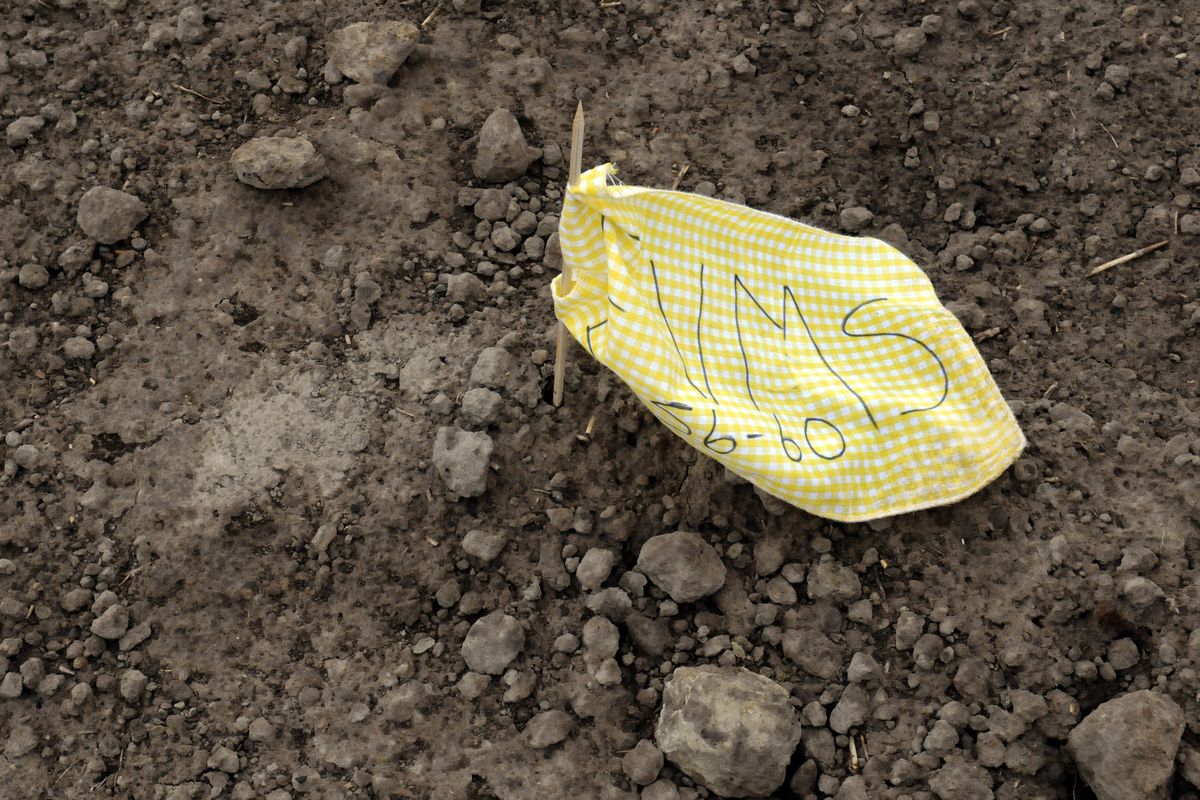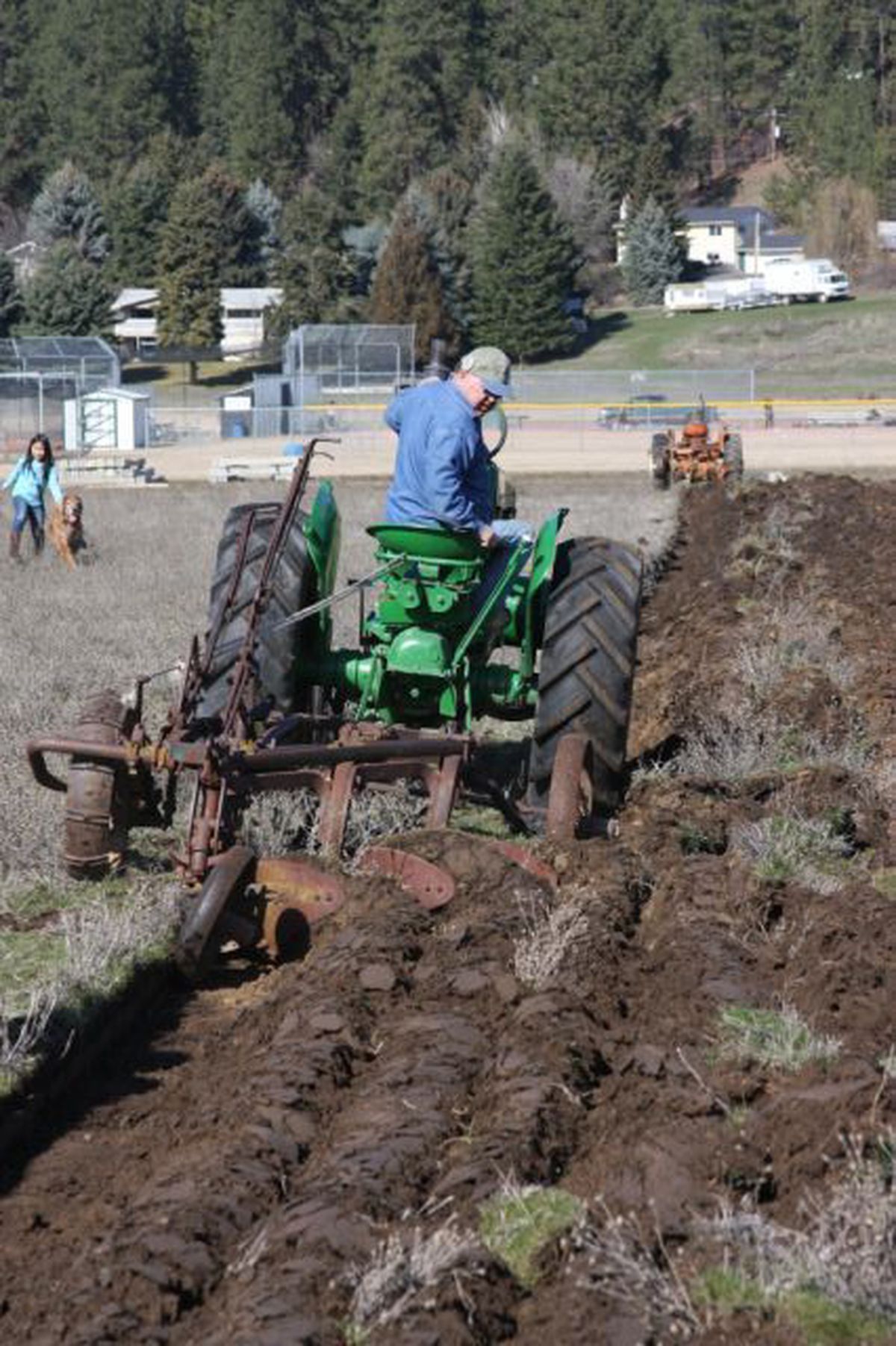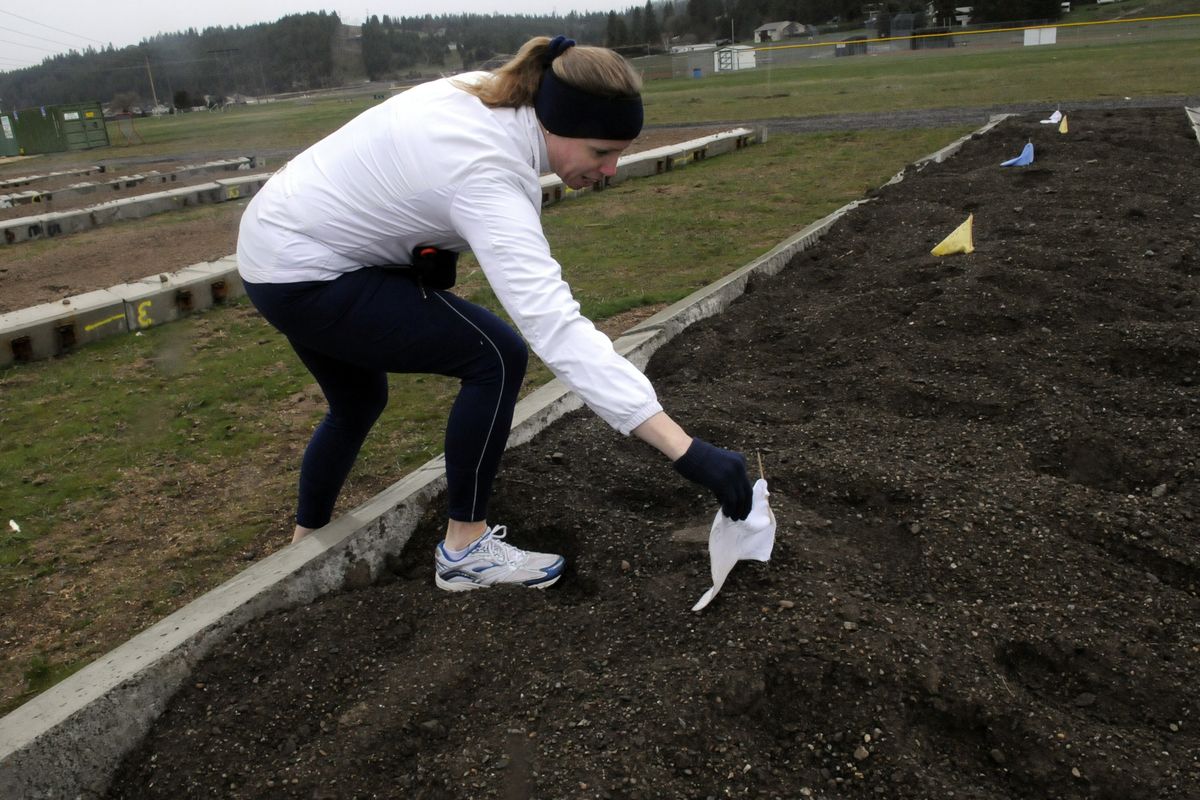New field of learning
East Valley’s plot to provide vegetables and education
“We want the community to take ownership in this,” commented Lynette Romney, as she checked on one of 14 raised garden beds that have been created at the site of the East Valley Community Garden on the northwest corner of Sullivan Road and Wellesley Avenue. She is spearheading the community garden, which will include 3 1/2 acres of field space. (J. BART RAYNIAK)
On the northwest corner of Sullivan Road and Wellesley Avenue between East Valley High School and East Valley Middle School, there has been a plot of land that hasn’t been used for much over the years. Spectators at softball games would often use it for parking in the summer, but for the most part, the 5-acre plot has just been vacant.
In the last month or so, that has changed. The land has been plowed and raised garden beds have been installed. It’s the beginnings of the new East Valley Farm to School project.
The idea is to involve both the community and the students of the district to plant and raise vegetable crops for their own consumption, local food banks and perhaps, sell at a farmers market at the garden.
Lynette Romney, a mother of four students in the district, said the idea sprouted from a nutritional services committee meeting formed to discuss concerns parents and staff were having about some of the pre-packaged foods the students were getting at lunchtime.
The parents noticed that apples were coming from Yakima and the preservatives used on the produce smelled funny.
“We thought, ‘Why don’t we buy from out local farmers?’ ” Romney said.
Earlier this school year, the district started buying corn on the cob from Fresh Start Farm and Carver Farms. Students at East Farms Elementary School shucked the corn which was cooked for them during lunch the next day.
Those local corn crops are the reason there probably won’t be corn in the new community garden.
“We don’t want to compete with our local farmers,” Romney said.
Superintendent John Glenewinkel agrees.
“We don’t want to compete with our local patrons and local growers,” he said.
The superintendent said the project will benefit students from many different programs from all of the schools in the district.
Glenewinkel said the garden will help students learn about where their food comes from by following their plants from seed to the plate. He also hopes this program will be the start of developing a Future Farmers of America chapter in the district.
Although in the short term, there may not be enough crops to go onto every plate in the district, Glenewinkel believes the garden will inspire students to learn about nutrition.
“Someday we hope there will be satellite gardens at each of our facilities,” he said.
Students from East Valley Middle School already have their plots marked with flags in some of the 14 raised beds which are 50 feet by 6 feet. The other 3 ½ acres will be used to plant crops.
The ground is still too cold to plant much, but the botany students at East Valley High School have already been planning their crops. Many of the starter plants are growing in the school’s greenhouse.
“Our greenhouse is full of plants,” said John Savage, an assistant principal at the high school and career and technical education director. “It didn’t get used a lot in the past.”
Key Club members at the high school have been in charge of marketing the garden to get the community involved and the special education students helped to level the field.
And the Future Business Leaders of America members are researching a future farmers market to sell the produce grown in the garden, crafts, or other items.
Barbara Cruse, principal of the Washington Academy of Arts and Technology, one of the district’s choice schools, said the district received a Learn and Serve grant from the federal government. The funds are given to programs that combine both learning and volunteerism. The district received $6,000 this year to purchase soil for the raised garden beds, some fencing to keep out the deer and the starter plants the botany students are tending.
Romney added that community members are already involved in the garden. Eldon Jons, the owner of AC Starr Farms of Newman Lake, helped to haul in the soil. CXT, another local business, donated cement blocks to create the raised beds.
She also said that community members could have their own patch of garden for free. They just need to tend it.
That community support will be important when school lets out for the summer. Although the district is hopeful some of the students will come back during the summer to work the land, it will need the volunteers to keep it going. Romney said the garden is in a high-profile location that will keep the community engaged.
“All these ball fields out here in the summer are full,” she said.


